The MAST Photography Grant on Industry and Work exhibition presents the works of the five finalists of the sixth edition of the MAST Foundation’s photo contest for emerging talents: Chloe Dewe Mathews, Alinka Echeverría, Maxime Guyon, Aapo Huhta and Pablo López Luz, selected from forty-two candidates from all over the world, they have developed original and unpublished projects on issues related to the world of industry and work. As the curator Urs Stahel explains: “Every two years, the MAST Foundation, through the MAST Photography Grant on Industry and Work, offers young photographers the opportunity to deal with problems related to the world of industry and technology, with the systems of labor and capital, with inventions, developments and the universe of production. And often their innovative and original gaze forces us to collide with inconsistencies, fractures, phenomena and perhaps even abysses that until now we had neglected or tried not to see”.
The exhibition opens with the winning project Apparent Femininity by Alinka Echeverría (Mexico City, Mexico, 1981), which reflects on the theme of historical memory in relation to the role of women in the field of the film industry and information technology. The artist takes a critical look into the fourth industrial revolution by reconstructing the stories of three women of the past, personalities unknown today despite being pioneers in fields of knowledge considered to be of the fore in contemporary society. In Grace, a LED animation created from a shot by American photographer Berenice Abbott, we remember Grace Brewster Murray Hopper, an American computer scientist, who at the end of her military career had reached the rank of flotilla admiral of the US Navy Reserve. In Hélène, a very common name at the time of silent cinema, when young women of the working class were entrusted with the editing of films, the artist monumentalizes the ability of the editors with a series of images printed on glass plates and placed on bases , in which fragments of gestures and work tools seem to establish a subtle parallel between the artisan component of the film industry of the time and the art (traditionally the prerogative of women) of sewing. Finally, the artist pays tribute to Augusta Ada King-Noel, countess of Lovelace, a mathematician considered by many to be the first programmer in history, through a gigantic collage in which historical images of women at work alternate with technological projects recovered thanks to a iconographic research also carried out in the MAST archives.
In the Baja Moda series, Pablo López Luz (Mexico, 1979) proposes a sequence of shots taken in various Latin American cities that highlight the resistance of local merchants and artisans to conform to the globalized and serial production of clothing items. If some details that recall the contemporary do not appear, it would be very difficult to understand that these photographs suspended in time were taken in our days. The author deliberately accentuates the illusion of backdating by working in analogue to then scan the images and print them digitally while maintaining the same softness of the surface texture of the old images. In the artist’s work we find clear quotations from Eugène Atget, author who described the French shop windows of the early 1900s, an expression of the new modernity of the consumer era, and references to Luigi Ghirri, who immortalized the change in the 70s and 80s of the Italian landscape also through the shop windows. The project investigates the boundary between reality and images, always intended as a reflection of an aesthetic that implies a precise political point of view. The curatorial choice of arranging the photos along the corridor evokes the city stroll, inviting the visitor to linger in front of these temporal glimpses just as if they were shop windows, which remind us how our age risks losing the most traditional knowledge.
Very different from an iconographic and ideological point of view, the Aircraft series by Maxime Guyon (Paris, France, 1990) focuses on the close and spectacular portrayal of mechanical components of airplanes photographed with a very high level of definition. The author, very young and engaged in advertising, seems to assimilate the shot to a frame taken from virtual contexts, in a vision that amplifies the idea of perfection and asepticity. The idea of standardization is also accentuated by the frame, which appears as a sort of packaging in which the work is assimilated to the mechanical piece it represents. The idea of an airplane, emblem of speed and standardization of travel, is reinterpreted from the inside through the magnification of its individual constituent elements. Unlike Le Corbusier, who in 1935 in his book “Aircraft” emphasized the vision from above offered by the new means of transport as a futuristic possibility of seeing the world from a new perspective, Guyon entrusts the idea of the future to futuristic interior design of the airplane as if the journey could become an instant transfer from one place to another that does not allow any experience of the landscape.
The For a Few Euros More project by Cloe Dewe Mathews (London, United Kingdom, 1982), on the other hand, tells about four industries that in some way intertwine with each other, each of which is an expression of a specific time and place. We are in Almeria, a southern region of Spain, where one of the most complex polytunnels in the world is located. In an area of 400 km² – commonly called the “sea of plastic” – an immense artificial construction extends, a continuum of plastic greenhouses where between 40% and 50% of the fruit and vegetables consumed in Europe are grown and produced. Close to this production area there is one of the largest European mines for the extraction of lead, gold and silver (opened in the mid-nineteenth century and active until 1966). In this location, which has now become a tourist spot, Sergio Leone shot his western films. The shots of the English artist compare the historical remains and the contemporary footprints of the four different industries that overlapped in the same place in images that recall the scenography of a film, presented in an installation of plastic boxes coming from the greenhouses as concrete trace of the work. In the film that completes the research, Cloe Dewe Mathews hires as an actor a young Ghanaian greenhouse collector who, playing himself, crosses the four different landscapes by bicycle. In a succession of ironic western quotations – from the title of the project itself, to the sound, to the shots, to the ingenious evocation of the horse through the riding helmet worn by the protagonist – it becomes evident how the element that connects these different realities is the human intervention, whose indelible marks remain even when the places are no longer used.
The work of Finnish photographer Aapo Huhta (Haapajärvi, Finland, 1985) deals with the theme of computer technology in a photographic installation that recalls the web page, in which images of different sizes emerge from a desktop-landscape accompanied by a sound of metallic voices who objectively read what they see. The artist chooses to exhibit some anonymous photos extrapolated from his personal archive and has them read by two algorithmic systems – one developed by Google and one by Microsoft – patented to describe the images to the visually impaired. The comparison highlights how the machines are unable to interpret some fundamental elements for understanding: for example a log splitter photographed with a log in his hand near a wood for the digital reader becomes “a 60 years old man, apparently not too happy, holding a snowboard in the middle of a snowy landscape ”or a blond girl immortalized in the act of mimicking an unpolite gesture is assigned an 89% chance of being an angel. By detecting these flaws and misunderstandings, the artist questions the blind trust we place in technology despite the wide margin of error it presents. Furthermore, the striking distance of virtual intelligence from reality is not only attributable to the fact that there is not yet such a sophisticated technology as to always read the image correctly, but it hides a more complex problem. The approximation of programmers that determines the standardized inaccuracies of the machines can in fact be interpreted as a sort of technological racism, which results in the prejudice of some machines towards certain ethnic groups. Just think, for example, that some cameras, when they scan images with people coming from other continents, automatically whiten the images because they are set on Caucasian traits, or that some automated systems that prevent cameras from shooting when people close their eyes, prevent the cameras from shooting even in the presence of people with oriental facial features, assimilated to subjects with closed eyes. The fact that software programming does not consider certain differences is a delicate and current issue on which we should dwell a little more. The project also raises another disturbing perspective: if in front of a photograph from our archive we know exactly what lies behind it because we perceive emotions linked to our memory, probably in the future there will be such sophisticated systems that they will not only be able to tell us exactly what is in the photograph, but also to evoke what we have experienced in relation to our visual archive.
Info:
MAST Photography Grant on Industry and Work
7 October 2020 – 3 January 2021
Opening hours: Tuesday – Sunday 10.00 – 19.00
Free admission upon reservation
www.mastphotogrant.com
MAST
via Speranza 42, Bologna
www.mast.org
 Alinka Echeverría, Apparent Femmininity, 2020, Ada, installation view © Alinka Echeverría
Alinka Echeverría, Apparent Femmininity, 2020, Ada, installation view © Alinka Echeverría
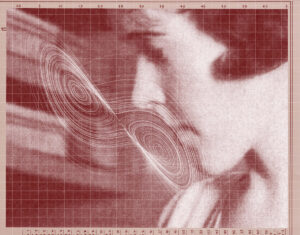 Alinka Echeverría, Apparent Femmininity, 2020, Ada (Plate 10) © Alinka Echeverría
Alinka Echeverría, Apparent Femmininity, 2020, Ada (Plate 10) © Alinka Echeverría
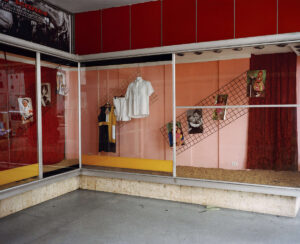 Pablo López Luz, Baja Moda CXII, Cuba, 2019 © Pablo López Luz
Pablo López Luz, Baja Moda CXII, Cuba, 2019 © Pablo López Luz
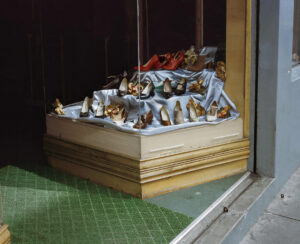 Pablo López Luz, Baja Moda XCVII, Ecuador, 2019 © Pablo López Luz
Pablo López Luz, Baja Moda XCVII, Ecuador, 2019 © Pablo López Luz
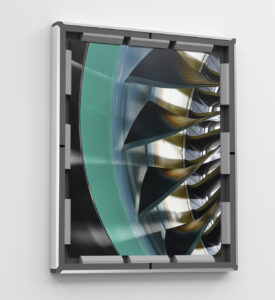 Maxime Guyon, Aircraft, Turbojet fan, 2018 © Maxime Guyon
Maxime Guyon, Aircraft, Turbojet fan, 2018 © Maxime Guyon
 Chloe Dewe Mathews, For a few euros more, Gold Mine, 2019 © Chloe Dewe Mathews
Chloe Dewe Mathews, For a few euros more, Gold Mine, 2019 © Chloe Dewe Mathews
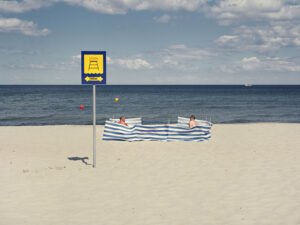 Aapo Huhta, Sorrow? Very unlikely, 2019 © Aapo Huhta
Aapo Huhta, Sorrow? Very unlikely, 2019 © Aapo Huhta
Graduated in art history at DAMS in Bologna, city where she continued to live and work, she specialized in Siena with Enrico Crispolti. Curious and attentive to the becoming of the contemporary, she believes in the power of art to make life more interesting and she loves to explore its latest trends through dialogue with artists, curators and gallery owners. She considers writing a form of reasoning and analysis that reconstructs the connection between the artist’s creative path and the surrounding context.






NO COMMENT